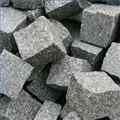Building or remodeling a kitchen, one of the most used rooms in the home, involves several big-ticket purchases, such as appliances. In addition, countertops, island tops and backsplashes can be expensive if you use a material that is stylish, safe and enduring, such as granite or Silestone.

Granite
Granite is a stylish choice for countertops, walls, flooring, and backsplashes. Granite is tough, heat resistant and easily maintained. A natural stone, granite is exceptionally attractive and is available in many colors. Granite must be cut with a diamond edge or granite edges because it is extremely difficult to cut. Despite granite being a strong stone, it is highly porous.
Granite Features
For interior use, granite must be sealed to prevent staining from food and drinks, cosmetic products and household chemicals. Granite is sealed upon installation and requires resealing every six months. The sealing process is relatively easy, and the homeowner can do it himself.
Granite does not scratch easily, however, a cutting board is recommended when preparing food. It is heat resistant, however, a trivet should be used for hot pots and pans. Granite costs approximately $45 to $75 per square foot.
Silestone
Silestone consists of 93 percent quartz and a synthetic resin. It both sophisticated product and durable. Silestone can be used in kitchens for countertops, backsplashes and island tops. It can also be used in wet bars, on walls, tabletops and around fireplaces.
Silestone Features
Silestone is nonporous and, therefore, does not easily stain. This also makes it resistant to bacteria. According to Silestone of Florida, “Silestone is a truly hygienic countertop and has federal government approval for use in commercial food applications, unlike natural stone.”
Silestone’s hard surface allows you to cut directly on the countertop without damage to the finish. It is four times as strong as granite. Only three natural minerals are stronger than Silestone: sapphire, diamond and topaz.
Silestone is heat resistant, but a trivet is recommended for hot pots and pans. (Silestone can endure the heat; however, you cannot immediately place a cool object where a hot object was placed, or risk cracking.) This material is maintenance free–it does not require resealing. Silestone costs $65 to $85 per square foot.
Conclusion
Granite and Silestone are comparable in several ways. Both materials provide durability and style. Granite requires resealing to protect its natural state, while Silestone does not. Silestone is nonporous and doesn’t stain easily; granite is porous and can stain. Overall, both products are easy to maintain. In terms of pricing, granite is slightly less expensive than Silestone, about $30 less per square foot.
